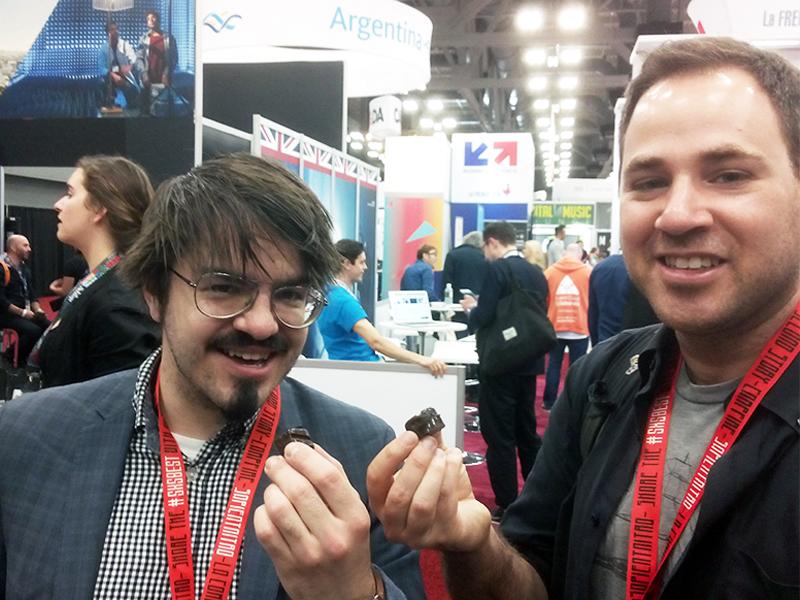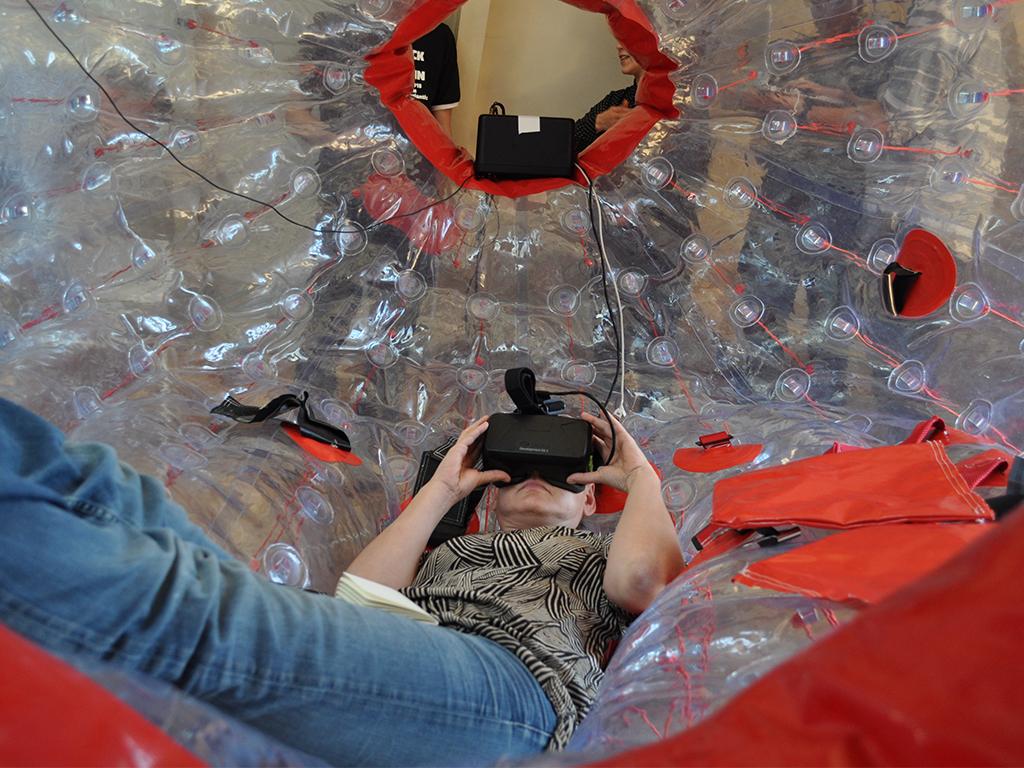A smooth flight from Amsterdam (during which clear skies enabled me to gaze at the frozen Canadian tundra for hours) took Chloé Rutzerveld and I to sunny Austin. We came to Austin to present our Open Wetlab and its activities at the SXSW Trade Show. An Open Wetlab at the Trade Show seemed like a strange combination (as we have no conventional trade), but this provided all the more conversation with the passing audience.
Explaining to the public what we do is both interesting and fun. While making chocolates filled with mice liver parfait and demonstrating how to culture flesh in a DIY incubator, we explained our event called The Other Dinner. A very small number of people (although more than we expected) ate our chocolates. Besides The Other Dinner, we spoke about Biostrike, Trust me I am an artist, the Biohack Academy, Hack the Brain, Do It Together Bio and other projects—pitching those activities time and time again. A patent law firm wanted to send us its customers; two gentleman from a pharma company agreed entirely with the Biostrike approach; Bruce Sterling came to have a chat; we were interviewed via stringwire; and we had many good conversations with numerous passers-by and friends (some even eating our chocolates).
The day before the Trade Show started, we visited a panel about “blurring the lines between disciplines with synthetic biology” that took place at the Moonshine Lounge (hired by MIT Media lab). Speakers included Paola Antonelli, Rob Carlson, Joi Ito, and Bruce Sterling. The panel was superbly moderated by Dan Grushkin. While it was an interesting conversation, it left me with a number of questions. Paula Antonelli advocated the value of design fictions, but I wonder whether we need more of these when scientists announce human germ line engineering using CRISPR modification that enables us to make both sperm and egg cells from a single parent.
Rob Carlson, currently the Managing Director of Bioeconomy Capital (and a speaker at PICNIC in Amsterdam some years ago), researches the value of the entire economy of synthetic biology. He explained how the syn-bio definition changes constantly depending on who uses it and where it is used. Sometimes the agro sector is included in the definition, and other times industrial and medical genomics show up. I wondered why Carlson himself did not set the definition since he's the one after whom The Economist named the “Carlson curve” (a term used to describe the biotech equivalent of Moore’s law). He has the reputation necessary to set the agenda, and I am curious about his findings. As I can already recommend his book, Biology is Technology, I'm waiting for his new one.
I want to thank Quitterie Largeteau and Aurelien Dailly (of Biohacking Safari from Paris), and Charles Fracchia (from MIT Media Lab) for organising a number of interesting panels on synthetic biology and creativity at the Moonshine bar. The last of these panels in which I took part discussed various visions of DIY Bio, innovation, public engeagement, education, collaboration, and creativity within laboratories like Genspace, other US biohackspaces, as well as laboratories in other countries. We discussed these topics with Mitch Altman from Noisebridge, Tim Marzullo from Backyard Brains, Connor Dickle from Synbiota, and with a great number of others from the biohacker community in the US.
The panel was, again, moderated by Dan Grushkin from Genspace.
After bravely sharing the organisational failures of biohacking spaces, an important difference between Europe and the US and Canada came to light: the possibility in both the US and Canada to work with GMOs. We also talked about a common agenda between the biohack spaces, especially where biohacking as a tool for educational and public engagement feeds into the idea that after “prototype or die” will come “deploy or die.” How do we combine educational goals with business opportunities? Hopefully, we will meet again soon, and continue the conversation about projects like Bio Commons—started by the European biohacker community who utilize the "deploy or die" mentality of US.

